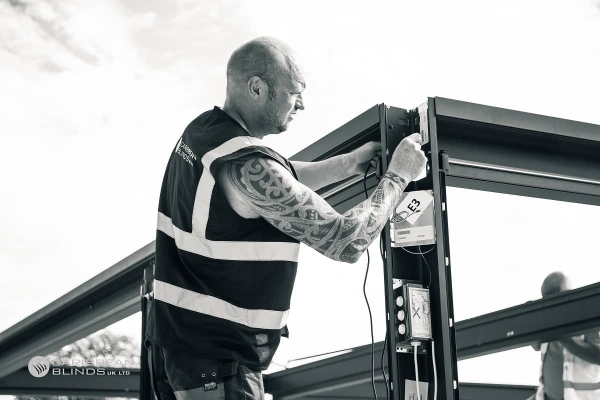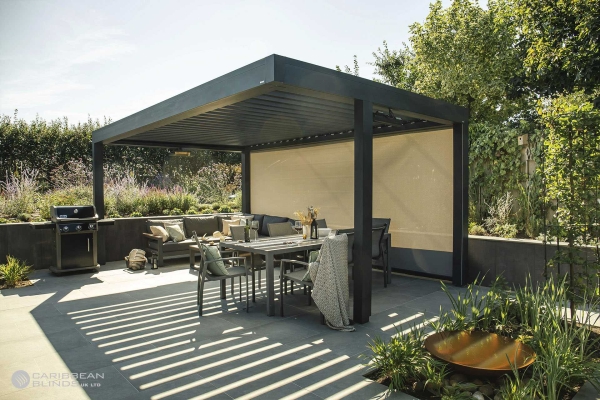Following a recent plummet in temperatures, Britain awoke to an icy start this morning as the first frost of the year made its appearance. Along with the need to de-ice our cars and grab an extra layer, there’s a number of ways we can shield our property from the frosty weather conditions to guarantee a hassle-free Winter. Check out our top tips below for Winter-proofing your home and garden over the coming months:
1. Preserve Pot Plants:
Potted plants are more susceptible to frost damage, so ideally bring these indoors before the first frost arrives. Any garage, outbuilding or porch is perfectly adequate and you can leave the plants here for just one night or a few days at a time when frost is an issue. Water plants as normal and aim to group the plants together for a greater thermal mass which will keep plants at their optimum temperature.
2. Protect Pipes:
Not only are pipes without insulation subject to heat loss, if they’re operating at a below-ambient temperature this can encourage water vapour to condense on the pipe surface which can cause long-term corrosion.
Whilst pipe insulation cannot prevent the freezing of standing water in pipework, it can increase the time required for freezing to occur, therefore reducing the risk of burst pipes. Thankfully, insulating pipes is very inexpensive and straightforward, with pipe insulation available from all good DIY stores for a few pounds so it’s a very worthwhile task.
3. Look After Your Lawn:
Whilst Winter can be perceived as a ‘quiet time in the garden,’ there’s still a few tasks to keep your lawn in tiptop condition which will pay off next Spring. First and foremost, regularly use a rake to keep the lawn free of leaves or debris which can cause moisture and encourage disease from worm activity.
If practical, avoid using the lawn as much as possible when it’s cold or frosty as grass plants can be easily damaged and will struggle to repair themselves until next Spring. If this isn’t viable, opt for a couple of stepping stones to keep lawn usage at a minimum whilst providing access through your garden. Finally, only mow the lawn when necessary and avoid mowing at all costs when the ground is very wet or a heavy frost is expected.
4. Prolong Paintwork:
If frost percolates into loose paintwork, cracks or joints can really take hold. Therefore, inspect the outside of your house and fill any gaps where necessary. Look out for vulnerable areas such as the tops and bottoms of doors where it’s best to sand down, prime and repaint if there are any chips, flakes or damage.
5. Guard Your Garden:
Make sure you turn off any outside taps or water features to prevent freezing and subsequent bursting. Additionally, keep gutters and drainpipes clear of any leaves and debris which can contribute to internal damp, and remove any low-hanging branches that could cause damage to your property in a storm.
6. Prepare For A Power Cut:
Winter storms can cause power cuts which can be hugely inconvenient if you’re unprepared. To be equipped in the event of a power cut, keep a source of light-producing objects, such as torches, candles and flashlights in a place you can easily locate in little or no light, along with a first aid kit and a note of your power company’s phone number so you can report the fault as soon as possible. Spare batteries are also handy, along with a wireless smartphone charger.
7. Tweak The Temperature:
If you’re away from home during the festive season, it’s advisable to keep your central heating running to prevent burst pipes and the risk of flooding. However, there’s no need to heat rooms to 20°C when the house is unoccupied. We’d suggest setting the temperature to 16°C which will keep your home suitably warm for your return whilst saving you 10-15% and protecting your home’s structure. Additionally, if you have a loft hatch, leave this open to allow warm air to circulate into the loft space whilst you’re away.
And finally, if you have one of our Outdoor Living Pods installed, for peace of mind and longevity, there is a built in frost protection sensor, which, when the temperature drops to 2°C or below, automatically opens the roof louvers by circa 10 degrees (pictured below), to prevent the rubber seals that form a waterproof joint between each louver freezing together and subsequently getting damaged should the roof be operated in freezing conditions along with protecting the motor that drives the roof open/closed.




